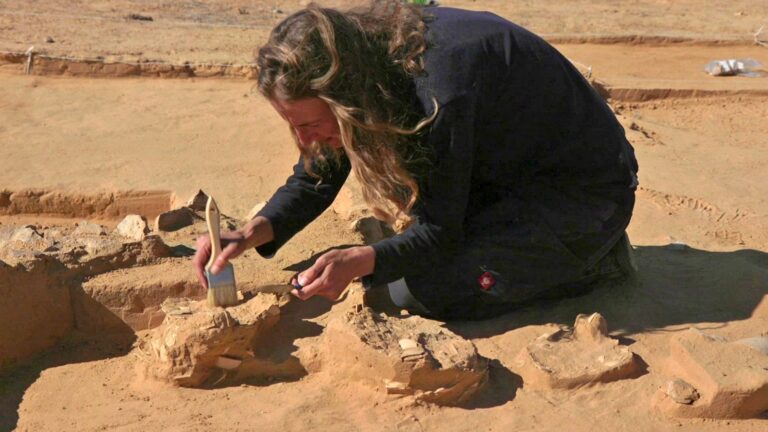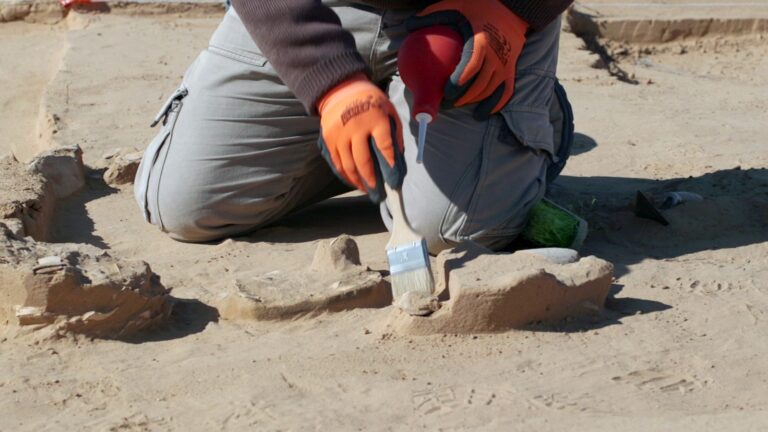Eight ostrich eggs dating back at least 4,000 years were recently uncovered in the Israeli desert in the south of the country, where the sand dunes they were buried under likely enabled their exceptional preservation.
The eggs were found near an ancient fire pit in the Nitzana sand dunes in the Negev when the area was excavated ahead of being turned into agricultural land.
“We found a camp site, which extends over about 200 square meters, that was used by the desert nomads since prehistoric times,” says Israel Antiquities Authority excavation director Lauren Davis. “At the site we found burned stones, flint and stone tools as well as pottery sherds, but the truly special find is this collection of ostrich eggs.”

“These camp sites were quickly covered over by the dunes and were re-exposed with the sand movement over hundreds and thousands of years. This fact explains the exceptional preservation of the eggs, allowing us a glimpse into the lives of the nomads who roamed the desert in ancient times,” she explained.

“One of the eggs was found directly in the fire pit, strengthening the understanding that they were used as food here. The ostrich eggs were crushed but well-preserved, despite the fact that they were uncovered in the surface layer.”
Ostriches were common in the area from the early prehistoric area until their extinction in the wild during the 19th century. Their eggs have been found in archeological sites from different periods, reflecting the importance of ostrich eggs as a raw material.
“We find ostrich eggs in archeological sites in funerary contexts, and as luxury items and water-canteens. Naturally, they were used as a source of food: one ostrich egg has the nutritional value of about 25 normal chicken eggs,” said Amir Gorzalczany from the Israel Antiquities Authority.
“It is interesting that while ostrich eggs are not uncommon in excavations, the bones of the large bird are not found. This may indicate that in the ancient world, people avoided tackling the ostrich and were content with collecting their eggs,” he notes.

Post-excavation scientific examination of the eggs, which are preliminarily dated between 4,000 and 7,500 years ago, will add information regarding the exact date of the site.
“After the excavation we will reconstruct the eggs, just like a puzzle. The whole egg may tell us the species, and exactly what they were used for,” Davis said. “As far as I’m concerned, every eggshell is worth its weight in gold!”

















